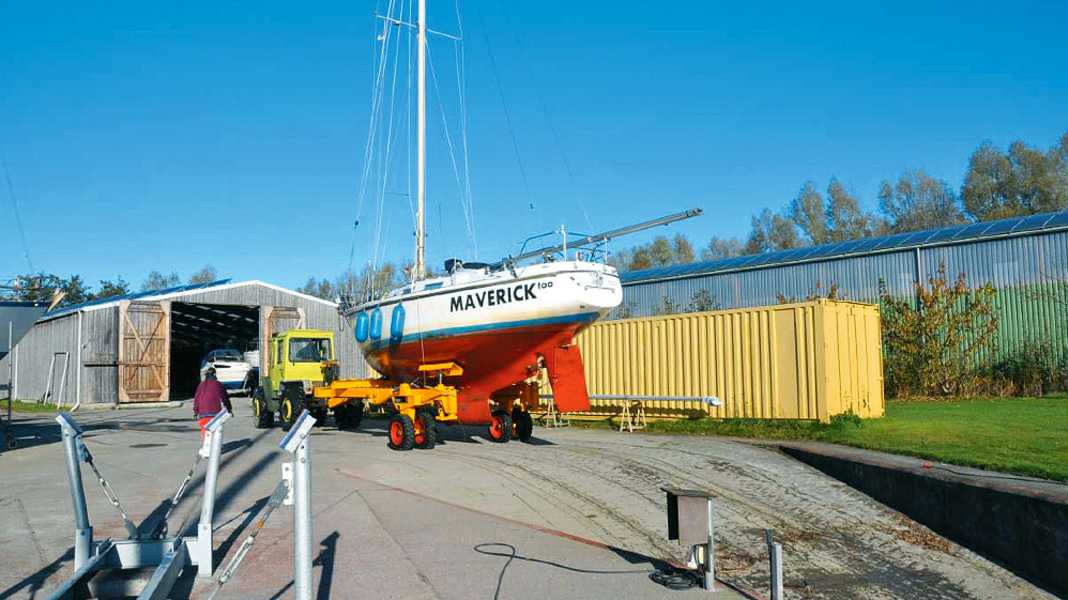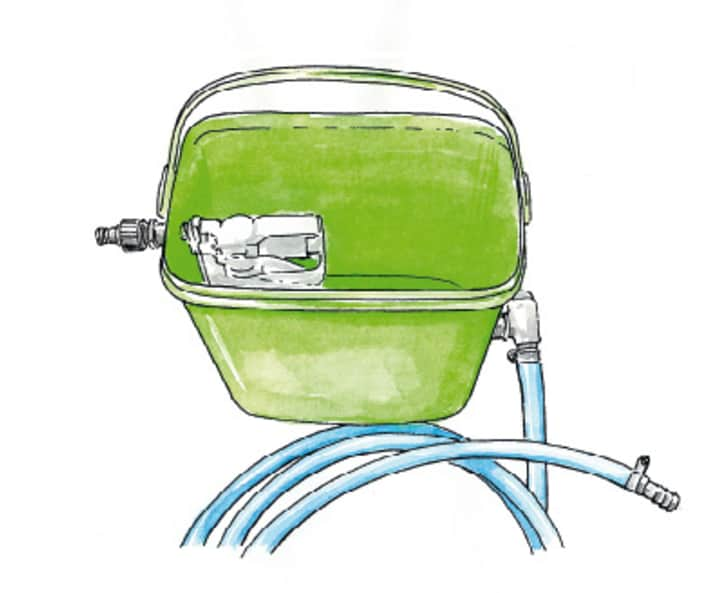
Drain valve

Water residue in the pressurised water system can cause considerable damage in the event of frost. We have therefore installed a small bleed valve from the heating system at the lowest point of the supply pipe. The appropriate square spanner is fixed in place, ready to hand. In autumn, we open the valve and let the residual water from the hose and pump run into the bilge. It can then be collected there with a cloth.
Edgar Wallenborn, 50171 Kerpen
Motor flushing 1

To keep the bilge clean when winterising the engine, we made a hose connection for the seawater filter: The sight glass of the filter is removed and replaced with a Plexiglas disc of the same size, into which a brass hose connection was glued with Sikaflex. When the engine is running, the additional hose is now used to suck fresh water and then antifreeze out of the fender and into the cooling system.
Helmut Neumann, 32108 Bad Salzuflen
Motor flushing 2

Previously, two people were always needed to winterise our machine. Our new flushing device now consists of a bucket into which the water inlet restrictor from a toilet cistern is inserted. A "Gardena" connection for the fresh water hose is fitted to it using a transition piece. The motor side can be switched off using a tap, as found on rainwater barrels. This means it can also be connected when the bucket is full without flooding. The antifreeze can be easily mixed in the bucket.
Joachim Schiemann, by e-mail
Impeller replacement with bandage

To insert the cooling water impeller, we use a wider cable tie, which is pulled over the centre of the rubber wheel so that the blades are already aligned in the working position. Now pull the tie tighter and turn it accordingly. Then apply a little detergent to the blades. The impeller can now be inserted easily, even with one hand. When doing so, gradually pull the cable tie outwards.
Robert Krinner, 1030 Vienna/Austria
Polishing on the rubber band

Polishing is tedious, because the weight of the electric helper itself quickly makes your arms lame. To make our work easier, we took the strain off the polisher by attaching a rubber support to the railing. After a few tests with different rubber thicknesses and lengths, we found a good balance. Now the machine only needs to be pulled down or pushed up from the centre position.
Berthold Schulz, Hamburg
Teak deck cleaning

Although the high-pressure cleaner can remove even deep-seated dirt, it damages the wood fibres of the teak. Daily washing with a hard scrubbing brush is also not recommended. The gentlest method is an occasional "massage" with a soft brush across the fibres. We have screwed one of the mounting plates of our cordless delta sander onto the back of the brush for this purpose. The brown broth produced during use is proof of its efficiency.
Heinz Lorenz, 84537 Ampfing
Do you also have a tip about winter storage? Write to us at mail@yacht.de !
